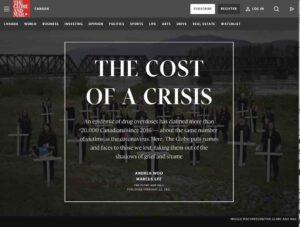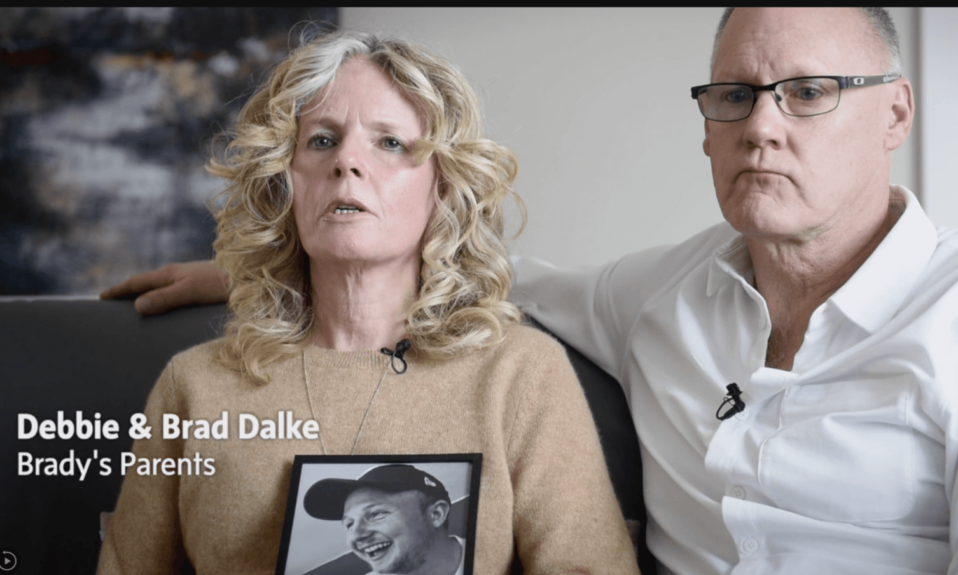“The Cost of a Crisis,” a stunning project by The Globe and Mail, has helped humanize the nation’s flood of overdose deaths
By William Wagner
February 18, 2021The Globe and Mail has put a hauntingly human face on Canada’s opioid epidemic.
Published in the Toronto-headquartered newspaper earlier this month, a special project titled “The Cost of a Crisis” is aimed at bringing perspective to the total of more than 20,000 Canadians who have died of drug overdoses since 2016. Instead of drilling down to minutia with charts and statistics and clinical analyses, the reporters, Andrea Woo and Marcus Gee, and their team focused on vignettes about and photos of 100 of those who lost their lives to opioids.

The project started in relatively modest fashion—as a memorial page featuring photos of as many of the overdose victims as possible—but it quickly grew into something much bigger.
There was one email in particular we got the day it ran from a woman who said that it had changed her view of the overdose crisis from ‘Maybe these people bear some fault for their own failings’ to ‘There is a societal tragedy at play here, and my attitude is part of the problem.’ That email meant a lot to me.”—Andrea Woo, reporter, The Globe and Mail
“As we spoke to families, they started volunteering very personal accounts and offering up details about mental health and incarceration and why their loved ones started using,” Woo says. “It ended up being this piece that showed very human and intimate examples of why people started using, how it became problematic and how they tried to handle it. It was more compelling than any story I could have written.”
About four months after Woo and Gee began their work, the deceased were, in a sense, able to speak for themselves. We learned about Danielle Blazik, a 38-year-old mother with a winning smile who became addicted to opioids after being injured in a car accident. And Erik Larsson, 32, a happy-go-lucky-looking gent who called his mother every single day to say, “I love you.” And 34-year-old Ryan Nayler, whose eyes were weary but whose peaceful soul ran deep. And so many other people whose lives ended too soon.
The day the piece was published, reactions began flowing in. Many of them have reaffirmed to Woo and Gee why they shined a light on these casualties.
We learned about Danielle Blazik, a 38-year-old mother with a winning smile who became addicted to opioids after being injured in a car accident. And Erik Larsson, 32, a happy-go-lucky-looking gent who called his mother every single day to say, ‘I love you.’ And 34-year-old Ryan Nayler, whose eyes were weary but whose peaceful soul ran deep.”
“The feedback has been incredibly heartening,” Woo says. “I certainly shed tears reading some of the responses. There was one email in particular we got the day it ran from a woman who said that it had changed her view of the overdose crisis from ‘Maybe these people bear some fault for their own failings’ to ‘There is a societal tragedy at play here, and my attitude is part of the problem.’ That email meant a lot to me.”













